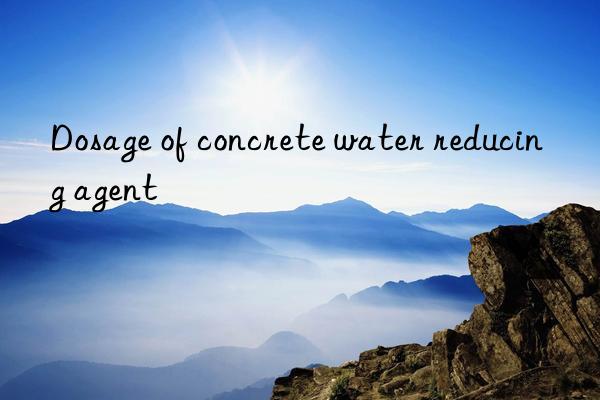
General concrete water-reducing agent dosage methods vary depending on the mixing shape. The concrete water-reducing agent production line equipment can divide the general water-reducing agent mixing methods into two types:
① Dry blending method, that is, the direct blending of powdered general water-reducing agent products:
② Wet blending method, that is, first prepare a general water-reducing agent into a liquid with a certain absorbance, and then add it together with the mixing water. If the mixing method is used, the dosage may be too small and become sticky when exposed to water, resulting in uneven fineness of the phase in the concrete mixture and affecting the use effect. Therefore, generally, water reducing agents should be mixed in wet state. At this time, the amount of water required to prepare the general water-reducing agent liquid must be deducted from the mixing water requirement to ensure the accuracy of the water-cement ratio.
① Dissolve the general water-reducing agent in the mixing water to prepare a liquid with a certain absorbance, and then add it to the premixed concrete and stone compounds. This method is Faster and more uniform force formula, but can ensure the most appropriate water reduction and improved workability:
② In stone, concrete and mixing water In the final step of mixing, general water-reducing admixture is added. The disadvantage of this method is that it is difficult for the concrete to achieve the required workability of uniform movement during the mixing process. And the general water-reducing agent is unevenly refined:
③The method that can combine the process characteristics and application effects is to mix the stone, concrete and about 50% of the mixing water first for 15 ~30s, then add the liquid prepared by dissolving 25% of the total mixing water requirement of the general water-reducing agent into the mixing mechanism. After exceeding the required workability, add the remaining mixing water to the mixing mechanism to complete the mixing process.
Concrete water-reducing agent dosage control
General water-reducing agents have a low water-reducing rate (Generally 5% to 8%), commonly used in coagulation equipment with very little fluidity. Because it is often accompanied by retarding and air-entraining effects, the appropriate amount should be used when using it. When used independently, when mixed with 0.25% to 0.30% of the total weight of concrete, the effect of water reduction and improvement is good. As the temperature rises, the mixing amount can be appropriately increased, but it cannot exceed 0.50% of the concrete weight. In addition to the tertiary industry, too much mixing will cause the concrete to decrease in rebound or fail to initially set for a long time, resulting in T process security incident. Under normal circumstances, the dosage exceeding 0-45% of the concrete weight may cause the concrete to rebound and damage the original shape. In addition, the dosage must be recorded accurately, and the measurement deviation shall not exceed ±5%.
</p

 微信扫一扫打赏
微信扫一扫打赏

